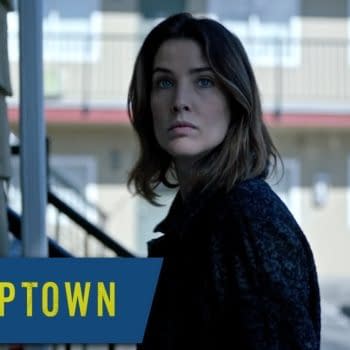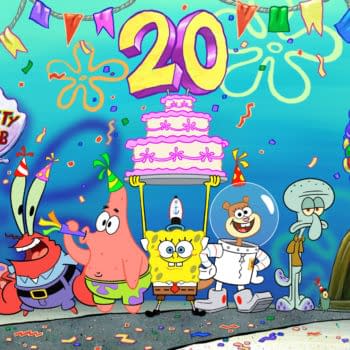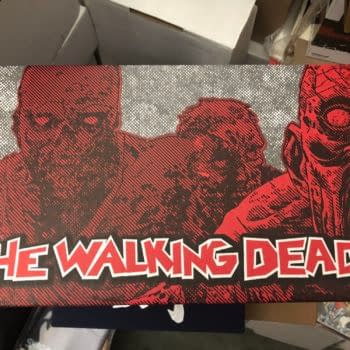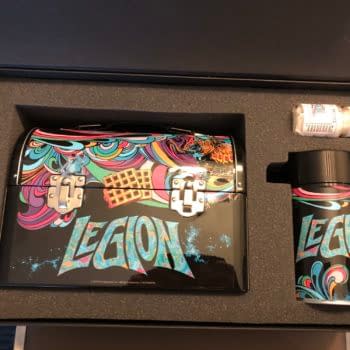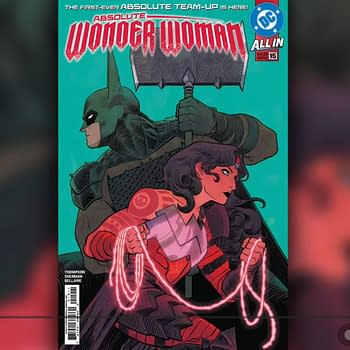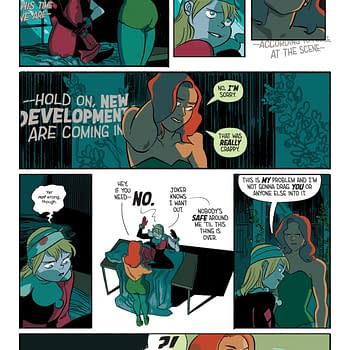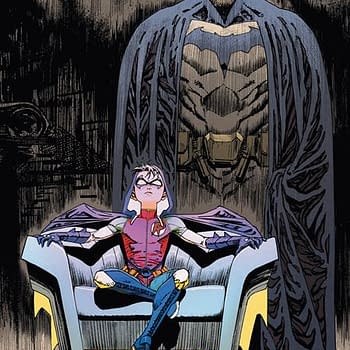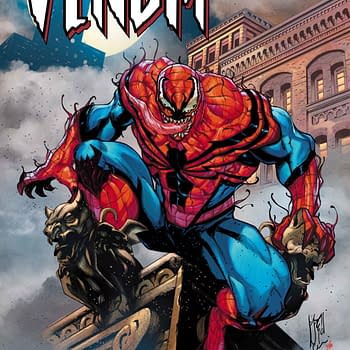Posted in: Comics, Conventions, Recent Updates | Tagged: charlton heston, doctor who, gallifrey one, ghostbusters, planet of the apes, Rachael Stott, richard starkings, star trek, Titan comics, Todd Nauck, tony lee
Licensed Comic Books And The Headaches They Cause, At Gallifrey One 2017
This year was the 28th Gallifrey One, the longest running annual fan-run Doctor Who convention, but this year was my first time attending. It was also Titan Comics first time attending, and they hit the ground running hard with a booth on the floor, multiple panels, and an exclusive Gallifrey One variant cover of The Tenth Doctor Adventures, Year Three, Doctor Who series, issue 2, with the cover art by Rachael Stott.
The first of the panels that I attended was called Licensed: Comics in Someone Else's Universe. The panel was moderated by Chris Thompson (Brand Manager for Titan Comics, Host of the Pop Culture Hound podcast, and former contributor to Bleeding Cool), and on the panel was artist Todd Nauck, who was cosplaying as the Tenth Doctor, writer Tony Lee, letterer and writer Richard Starkings, writer and Vice President and Editorial Director of Legendary Comics Robert Napton, writer Nick Abadzis, artist Rachael Stott, artist Blair Shedd, and artist Christopher Jones.
The first question Thompson asked was how the writers handle licensed characters when they are dealing with those characters at a specific time in their history, in the case of Doctor Who, where you know you can't do certain things with the characters. Tony said when he was writing a Tenth Doctor story, they already knew the Martha Jones character was moving on and they couldn't really do anything to her as the audience already knew how her story ended, so they created two new companions. When they made a pitch to BBC to create the two companions they said they wanted to create two people they could kill, whether they did or did not, they wanted the ability to do so just in case. It made the drama better.
Later the panel was talking about dealing with the licensors for approval on the comics. Starkings talked about when he worked on The Real Ghostbusters, and working with artist Phil Elliot on the books. The licensor hated his work and made Elliot trace from the book's bible. Starkings dealt with it by writing a story where a witch changed all the Ghostbusters' faces so the licensor wouldn't be able to complain about the characters likenesses.
Tony spoke about working on creator owned versus licensed books. He said, "When I'm actually doing a license I kind of want something creator owned, and when I'm doing creator owned I need someone to come back and tell me what to do."
When I was going to ask a question from the audience, Thompson, who had recognized my name earlier in the day when I stopped by the Titan booth as a Bleeding Cool writer, made sure to let the whole panel know this when he called on me. Since a number of the panelists had worked on books that involved multiple licenses, I asked the panel what that was like. Tony, who had worked on the Doctor Who/Star Trek miniseries, said he could give me a real quick answer, "I quit on book four." Rachael, discussed working on the Star Trek/Planet of the Apes miniseries, said that book had three licensors to deal with, because Charlton Heston was a separate license. So everything she did had to be sent through three different people. She said, "The Charlton Heston people were really sweet. The only note they ever sent back that I had to change something was that I drew him a bit too sexy. Because he's wearing this loincloth and in the movie he's quite barrel chested, old school, like beefy man. And I drew him like modern day, like 'Oh hey, I'm just like Tom Hiddleston with his shirt off and Charlton Heston's face.'"
Overall a very entertaining and still informative panel. After listening to Tony Lee, both in this panel and throughout the weekend, I do think he needs his own talk show.
For further musings from Joshua Stone you can follow him on the Twitter @1Nerdyone




